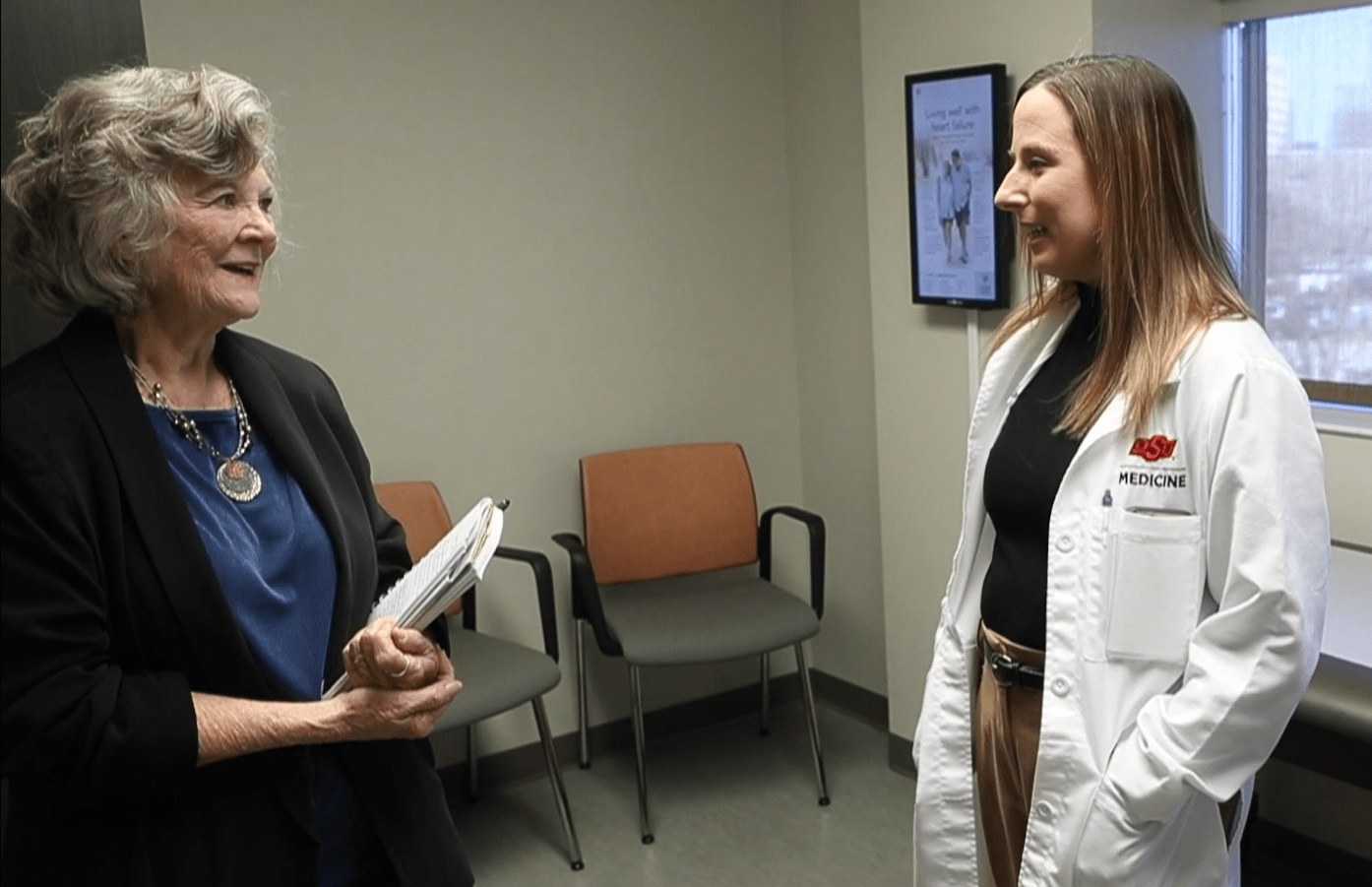
Dr. Boyer Answers Questions About Heart Disease in Women
February is American Heart Month and February 2 is National Wear Red Day to raise awareness about heart disease in women.
Dr. Kryston R. Boyer is a board-certified cardiothoracic surgeon in Tulsa, Oklahoma. After growing up in Newkirk, Oklahoma, Dr. Boyer earned her doctor of osteopathic medicine degree from Oklahoma State University College of Osteopathic Medicine and completed her surgical residency at OSU Medical Center in Tulsa, then went on to become a Cardiothoracic Surgery Fellow at the prestigious Brigham and Women’s Hospital affiliated with Harvard Medical School in Boston. OSU Medicine was delighted to welcome her back home when she joined our team in 2022.
We recently asked her a few key questions regarding women’s heart disease.
Q: What would surprise people about women and heart disease?
A: Heart disease is the number one killer of women in the United States, and often goes undetected until it is fatal.
Q: How are women’s symptoms of heart disease different from men?
A: Pain or pressure felt just behind or below the sternum is the most common symptom of heart disease regardless of gender. However, women are more likely to experience atypical symptoms like pain or discomfort in one or both arms, the back, neck, jaw or abdomen. Women may also experience shortness of breath with or without chest discomfort, cold sweats, nausea, vomiting or lightheadedness. If you feel any of these symptoms, even if they go away, call your doctor immediately and start assessing if you are experiencing the early signs of heart disease.
Q: What is the risk of sudden death from heart disease in women compared to men?
A: Sudden death from coronary heart disease occurs at a lower rate in women than men until the age 55 when the risk of a fatal cardiac event is the same in men and women. Women’s subtle heart disease symptoms can go undetected and sudden death may be the first recognized symptom.
Q: What are the risk factors to heart disease we CAN’T change?
A: Unfortunately, there are some risk factors such as age or genetics that we can’t change. Heart disease increases in women over the age of 55. A family history of heart disease also increases your risk of the disease. There can also be hormonal influences with menopause and women who suffered from preeclampsia during pregnancy have a higher risk of developing heart disease over their lifetime.
Q: What are the risk factors to heart disease we CAN change?
A: Smoking, diabetes, obesity, high blood pressure, high cholesterol, physical inactivity, unhealthy eating, alcohol use, lack of sleep and stress are risk factors to heart disease you can change. KNOW YOUR NUMBERS to know your risks. KNOW your cholesterol and triglyceride levels, KNOW your blood pressure, KNOW your weight and BMI (Body Mass Index). Next time you visit your doctor – talk about your risk for heart disease, no matter your age.
Q: What can women do to lower their risk of heart disease and sudden cardiac death?
A: One of the most important things to do is quit smoking now. Talk to your doctor about your cholesterol and blood pressure levels. If you have diabetes, ensure that your blood sugars are well controlled and obtain routine screening with your primary care physician. Learn about beginning heart healthy eating habits, develop an exercise plan and find an outlet to reduce the stressors in your life.
For more information, contact OSU Cardiovascular Medicine at 918-582-7711.